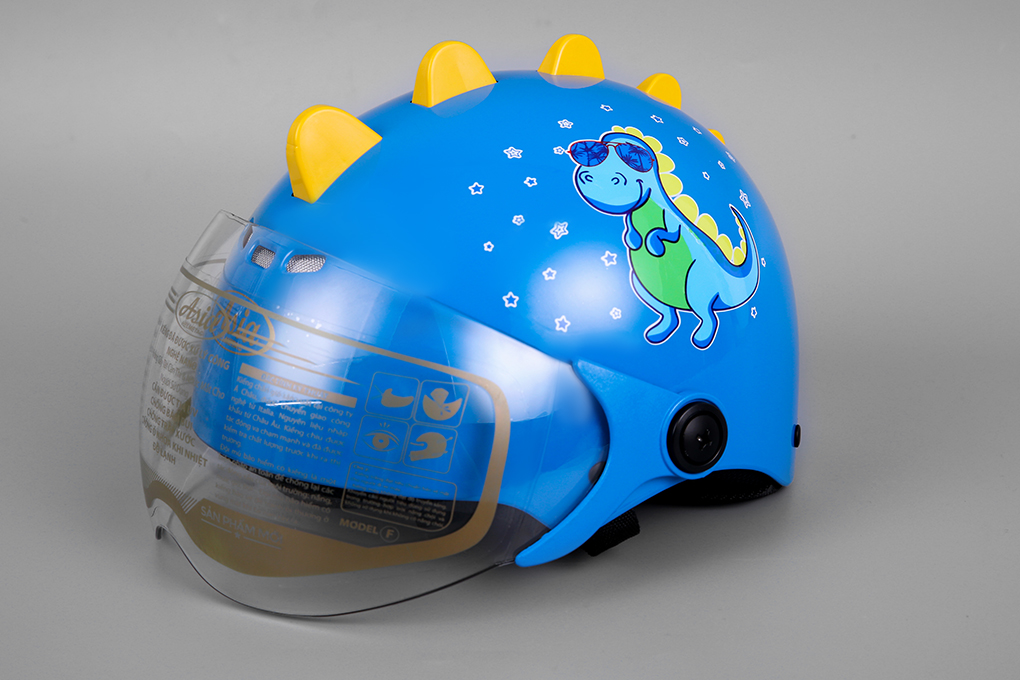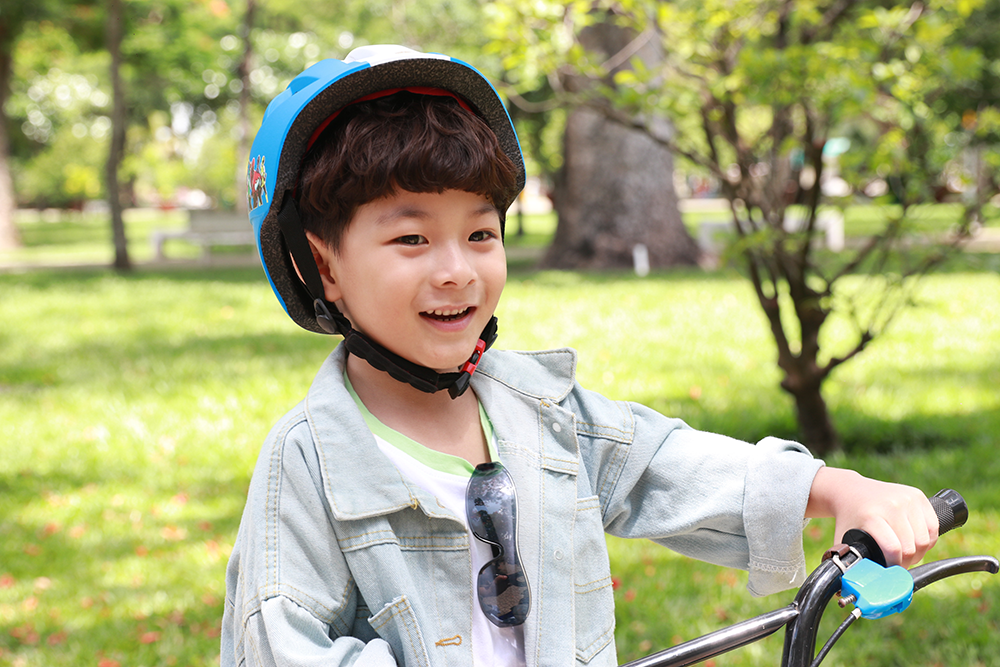Ensuring the safety of children during outdoor activities is a top priority for any parent or guardian. Whether your child is riding a bike, skating, or playing sports, wearing the right helmet is one of the most effective ways to protect them from serious head injuries. In this article, we will explore the importance of helmets for kids, key considerations when choosing the right one, and the best options available to keep your child safe from an early age.
Why Helmets Are Essential for Kids
Head injuries are one of the leading causes of serious accidents among children, especially during recreational activities like biking, skateboarding, and sports. According to the Centers for Disease Control and Prevention (CDC), helmets are proven to reduce the risk of head injuries by up to 85%. For this reason, wearing a helmet is not only a smart decision but a crucial one for safeguarding your child.
Key Benefits of Kids’ Helmets:
- Prevents Severe Injuries: Helmets help absorb the shock during an impact, reducing the severity of injuries, such as skull fractures or concussions.
- Promotes Safe Habits: Encouraging kids to wear a helmet from an early age instills a safety-first attitude that can carry over into adulthood.
- Peace of Mind for Parents: When you know your child is protected by a high-quality helmet, you can feel confident that you’re minimizing the risk of potential injuries.
While children are naturally curious and adventurous, they are also more prone to falls and accidents. This makes wearing a helmet even more important when they are engaging in activities with a higher risk of head injury.
What to Look for in a Kids’ Helmet
When shopping for a helmet for your child, several factors come into play to ensure safety, comfort, and durability. Here are the key elements you should look for when choosing a helmet for your little one:
1. Proper Fit
A helmet that doesn’t fit properly will not provide adequate protection in the event of an accident. A helmet should sit comfortably on your child’s head, without being too tight or too loose.
- Head Circumference: Measure your child’s head circumference just above the ears and across the forehead to determine the correct helmet size.
- Adjustable Straps: Ensure that the helmet has adjustable straps that can secure it firmly in place without causing discomfort.
- V-Groove Design: Many helmets now come with a V-groove or an adjustable dial that ensures a snug fit for growing children, allowing for adjustments as your child grows.
A good fit is essential because a loose helmet can shift during a fall, reducing its effectiveness, while an overly tight helmet may cause discomfort or even headaches.

2. Lightweight Construction
Children’s helmets should be light enough for them to wear comfortably for extended periods. Heavy helmets can cause neck strain and be uncomfortable, leading to your child refusing to wear it.
- Materials: Look for helmets made from lightweight materials like expanded polystyrene (EPS) foam, which is commonly used for its impact-absorbing properties.
- Ventilation: A well-ventilated helmet will help keep your child’s head cool and prevent overheating, especially during hot summer days or long bike rides.
Lightweight helmets make it easier for your child to enjoy their activity without feeling weighed down.
3. Impact Resistance and Safety Certifications
Make sure that the helmet your child wears meets the necessary safety standards. In the United States, helmets for cycling, skateboarding, and other activities should meet the Consumer Product Safety Commission (CPSC) standards.
- Safety Certifications: Look for helmets labeled with CPSC certification for bikes and skateboards or ASTM (American Society for Testing and Materials) for sports helmets.
- Multi-impact Protection: Some helmets come with MIPS (Multi-directional Impact Protection System) technology, which reduces rotational forces that can cause brain injuries during impacts.
Quality helmets designed with safety features such as impact-resistant foam or a reinforced shell are more likely to protect your child from severe injuries during a fall.
4. Comfort and Style
Since kids may not always be excited about wearing a helmet, it’s important to find one that’s comfortable and appealing to them. A helmet that feels good and looks cool is more likely to be worn without a fight.
- Padding: Helmets with cushioned padding on the inside provide extra comfort and a better fit. They also help absorb sweat, keeping your child dry.
- Designs and Colors: Kids love helmets that match their personality. Look for helmets with fun designs, bright colors, or themed graphics to make the helmet more enticing to wear.
A comfortable and stylish helmet can make all the difference in whether your child will wear it consistently.

Top 5 Helmets for Kids
Now that we’ve covered what to look for in a helmet, here are five of the best helmets for kids on the market today, offering a combination of safety, comfort, and style:
1. Giro Tremor MIPS Helmet
Best For: Biking and skateboarding
The Giro Tremor MIPS is a popular choice for young riders due to its lightweight design, MIPS technology for added safety, and adjustable fit system. It also features ample ventilation, making it perfect for active kids.
Key Features:
- MIPS technology for added safety
- In-mold construction for a lightweight, durable design
- Easy-to-adjust fit system for growing heads
- Fun color options and designs
2. Bell Sidetrack Child Bike Helmet
Best For: Mountain biking and cycling
The Bell Sidetrack is a great option for kids who are into mountain biking or general cycling. It’s equipped with a multi-sport design, adjustable sizing, and a durable outer shell to withstand impact.
Key Features:
- Extended rear coverage for additional protection
- Adjustable fit system for a snug, secure fit
- Cool designs and vibrant colors
- Comfortable padding for all-day use
3. Thousand Jr. Bike Helmet
Best For: Stylish city cycling
The Thousand Jr. Bike Helmet offers a vintage-inspired look with modern safety features. It’s perfect for kids who want to ride their bikes around town with style while staying safe.
Key Features:
- Sleek, minimalist design with stylish colors
- Secret pop-lock for securing helmets to bikes
- Lightweight and comfortable for extended use
- CPSC and EN1078 certified for safety
4. Nutcase Baby Nutty Helmet
Best For: Toddlers and younger kids
The Nutcase Baby Nutty Helmet is designed for toddlers just starting to ride. It provides extra safety features and a snug, secure fit for younger children who are still learning how to balance.
Key Features:
- EPS foam for maximum impact protection
- Adjustable chin straps and dial fit system
- Bright, fun designs to make wearing a helmet exciting
- Lightweight and comfortable for toddlers
5. SmartKids Child Bike Helmet
Best For: Budget-friendly and beginner riders
For parents on a budget, the SmartKids Child Bike Helmet offers excellent protection without breaking the bank. It’s a well-rounded helmet that provides all the essential safety features for everyday riding.
Key Features:
- Adjustable straps and dial fit system
- High-quality, impact-resistant foam
- Comfortable and breathable for active kids
- Vibrant, kid-friendly designs
Conclusion
Ensuring that your child wears a helmet is one of the most important steps you can take to protect them while they enjoy outdoor activities. From biking to skateboarding, helmets play a crucial role in preventing head injuries and promoting safe habits. By choosing a helmet that offers a proper fit, comfort, and essential safety features, you can rest assured that your child is safe and ready for any adventure. With a variety of eco-friendly and stylish options available, there’s no reason not to invest in a helmet that your child will want to wear every time they go outside.
Remember, safety should always come first—so make sure your little one is protected with a quality helmet from an early age.


